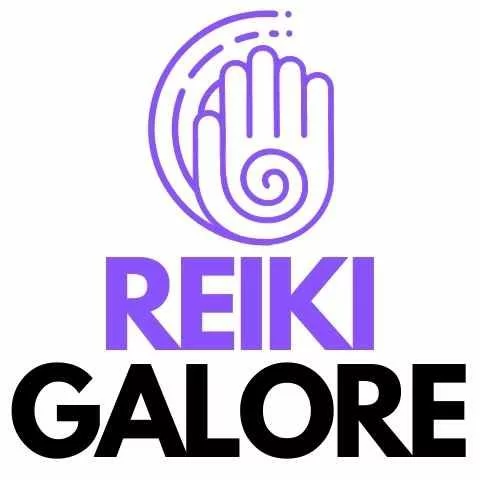Are you looking for an alternative method of pain relief? Consider trying Reiki, a holistic approach to pain management that has been gaining popularity in recent years. Reiki is a practice that can help with physical and emotional problems, including pain. It works by reducing stress and promoting relaxation, allowing the body to focus on healing itself. If you’re interested in exploring alternative pain relief methods, Reiki may be worth considering.
Key Takeaways:
- Reiki is a natural and soothing approach to pain relief.
- It helps reduce stress and promote relaxation.
- Reiki can be used alongside other medical treatments as a complementary therapy.
- Research suggests that Reiki therapy may have positive effects on pain control and overall well-being.
- Consult with a qualified Reiki practitioner to discuss your individual health needs and goals.

Understanding Reiki Therapy
Reiki therapy is a gentle and non-invasive practice that harnesses the power of universal energy to promote healing and pain relief. During a Reiki session, the practitioner acts as a channel for this healing energy, transferring it to the client through their palms. The client can either sit or lie down while the practitioner places their hands lightly on or above specific areas of the body.
The transfer of energy during a Reiki session helps to improve the flow of energy in the body, remove energy blocks, and promote relaxation. This process is believed to facilitate the body’s innate healing abilities, allowing for pain relief and overall well-being. Reiki therapy can be used alongside other medical treatments and is often considered a complementary therapy that supports holistic pain management.
Reiki therapy involves the transfer of universal energy from the practitioner’s palms to the client, facilitating the client’s innate healing abilities.
Reiki therapy is beneficial for both physical and emotional pain relief. By promoting relaxation and reducing stress, Reiki helps the body shift from a state of tension and pain to a state of ease and healing. It can help restore balance in the body’s energy systems and promote a sense of well-being. While the exact mechanisms of Reiki therapy are not fully understood, research suggests that it may impact the body’s electromagnetic fields and energy systems, contributing to its effectiveness as a complementary approach to pain management.
Benefits of Reiki Therapy
- Promotes relaxation and stress reduction
- Enhances the body’s natural healing abilities
- Improves mood, sleep, and overall well-being
- Reduces pain, blood pressure, and anxiety
- Supports holistic pain management
In summary, Reiki therapy is a gentle and non-invasive approach to pain relief that harnesses the power of universal energy. By improving energy flow and promoting relaxation, Reiki can help reduce pain, anxiety, and stress while enhancing overall well-being. It is important to work with a qualified Reiki practitioner to ensure safe and effective treatment.
The Benefits of Reiki for Pain Relief
Reiki therapy offers a multitude of benefits for pain relief. Research studies have shown that Reiki treatments can help reduce pain, lower blood pressure, and decrease breathing rate. In addition to physical benefits, Reiki has been found to have a positive impact on anxiety levels, providing emotional support for those living with pain. By promoting relaxation and reducing stress, Reiki allows the body to focus on healing itself, contributing to overall pain management.
One of the key advantages of Reiki therapy is its ability to shift the autonomic nervous system from a heightened state of alertness to a state of rest and recovery. This shift is crucial for pain relief, as it helps the body find balance and promote healing. Reiki works by channeling universal energy through the practitioner’s hands, which is believed to remove energy blocks and promote the free flow of energy throughout the body. By harmonizing energy flow, Reiki therapy supports the body’s natural healing processes.
Reiki and Pain Relief Research Studies:
“Research studies have reported notable results in using Reiki therapy for pain relief. For instance, a study conducted on patients undergoing surgery found that Reiki treatments significantly reduced pain, anxiety, and blood pressure levels. Another study focused on cancer patients showed that Reiki therapy improved pain control and reduced anxiety. These findings highlight the potential of Reiki as a complementary approach for managing pain and promoting overall well-being.”
It’s important to note that Reiki should be considered as a complementary therapy and used alongside conventional medical treatments. It is not a substitute for professional healthcare advice. When seeking Reiki therapy, it is recommended to consult with a qualified Reiki practitioner who can provide personalized care and support.
| Key Benefits of Reiki for Pain Relief |
|---|
| Relieves pain and discomfort |
| Reduces blood pressure and breathing rate |
| Decreases anxiety and stress levels |
| Promotes relaxation and emotional well-being |
| Aids in restoring balance and harmony in the body |
Overall, Reiki therapy offers a gentle and non-invasive approach to pain management that can provide both physical and emotional relief. By harnessing the power of universal energy, Reiki can support the body’s natural healing abilities and contribute to overall well-being.
The Science behind Reiki Therapy
Reiki therapy is an energy healing practice that has been used for centuries to promote relaxation, reduce stress, and enhance overall well-being. While the mechanisms of Reiki therapy are not fully understood, research suggests that it may impact the body’s electromagnetic fields and energy systems.
During a Reiki session, the practitioner acts as a channel for universal energy, transferring it to the client through their hands. This energy transfer is believed to help balance and harmonize the flow of energy in the body, promoting healing and relaxation. By reducing stress and promoting a state of calm, Reiki therapy allows the body to shift from a state of heightened alertness to a state of rest and recovery.
While more research is needed to fully understand the scientific basis of Reiki therapy, the existing evidence supports its effectiveness for pain relief and other health conditions. Studies have shown that Reiki can lead to significant reductions in pain, anxiety, and stress in patients undergoing surgery or living with cancer. Reiki therapy may offer a safe and non-invasive approach to pain management and overall well-being.
How Reiki Works
Reiki is a powerful technique that can provide natural pain relief for individuals with chronic pain. It works by channeling universal energy to the recipient, helping to remove energy blocks and promote healing. Unlike traditional pain relief methods, Reiki addresses both the physical and emotional aspects of pain, providing a holistic approach to pain management.
During a Reiki session, the practitioner places their hands lightly on or above different areas of the body, allowing the energy transfer to take place. The recipient may feel sensations such as warmth, tingling, or pulsating waves, indicating the flow of energy. These sensations create a deep sense of relaxation and help reduce tension and stress in the body.
Reiki also helps restore balance and harmony in the body, promoting overall well-being and natural pain relief. By providing a calm and soothing environment, Reiki allows the body to better cope with pain and supports its natural healing abilities. It is a safe and non-invasive technique that can be used alongside other medical treatments to enhance pain management.
The Benefits of Reiki for Chronic Pain
Reiki is particularly beneficial for individuals with chronic pain conditions. It offers a gentle and nurturing approach to pain relief, addressing not only the physical symptoms but also the emotional and energetic imbalances that may contribute to chronic pain. By promoting relaxation and reducing stress, Reiki can help individuals cope with pain more effectively and improve their overall quality of life.
| Benefits of Reiki for Chronic Pain | Summary |
|---|---|
| Reduces pain intensity | Reiki can help alleviate the intensity of chronic pain, providing relief and improving daily functioning. |
| Enhances relaxation | Reiki induces a deep state of relaxation, helping individuals manage stress and anxiety associated with chronic pain. |
| Promotes emotional well-being | Reiki addresses the emotional aspects of chronic pain, promoting emotional healing and overall well-being. |
| Supports self-healing | Reiki activates the body’s natural healing abilities, supporting the self-healing process for long-lasting pain relief. |
| Improves energy flow | Reiki helps remove energy blocks, restoring the balance and flow of energy throughout the body, which can alleviate pain. |
Overall, Reiki is a natural and gentle technique that can provide relief from chronic pain. By promoting relaxation, reducing stress, and restoring energetic balance, Reiki supports the body’s innate healing abilities, offering a holistic approach to pain management.
Reiki for Pain Relief: Supporting Evidence
There have been several studies conducted to investigate the effectiveness of Reiki therapy for pain relief. The results have shown promising outcomes, indicating that Reiki may be an effective complementary approach to managing pain. For example, research has found that Reiki treatments can lead to significant reductions in pain, anxiety, and stress levels in patients undergoing surgery or living with cancer. These findings suggest that Reiki therapy has the potential to provide relief and improve overall well-being for individuals facing various pain-related conditions.
“The existing evidence suggests that Reiki therapy may be an effective complementary approach to pain management.”
– Reiki Research Review
In addition to reducing pain and anxiety, Reiki therapy has been associated with improvements in mood, sleep, and overall quality of life. Patients who received Reiki treatments reported feeling more relaxed, peaceful, and better able to cope with their pain. While larger-scale studies with standardized treatment protocols are needed, the current evidence highlights the potential benefits of Reiki therapy for pain relief and holistic pain management.
Table: Studies on the Effectiveness of Reiki Therapy for Pain Relief
| Study | Participants | Findings |
|---|---|---|
| “Effects of Reiki on Pain and Anxiety in Adults Undergoing Hemodialysis: A Pilot Study” | 30 adults undergoing hemodialysis | Significant reductions in pain and anxiety levels after Reiki treatments |
| “The Effects of Reiki Therapy on Pain and Anxiety in Patients With Soft Tissue Lesions” | 60 patients with soft tissue lesions | Reiki therapy led to decreased pain and anxiety levels |
| “The Effects of a Single Session of Reiki on Pain and Mood in Healthy Individuals” | 50 healthy individuals | Reiki resulted in reduced pain and improved mood |
These studies provide a glimpse into the potential benefits of Reiki therapy for pain relief, but further research is needed. It is important to note that Reiki should be used as a complementary therapy alongside conventional medical treatments, and individuals should consult with a qualified Reiki practitioner to ensure safe and appropriate use.
What to Expect during a Reiki Session
During a Reiki session, clients can expect to experience a sense of calm and relaxation. The practitioner will gently place their hands on or above different areas of the body, allowing the transfer of energy to take place. Clients may feel various sensations such as warmth, tingling, or pulsating waves as the energy flows through their body. Each hand position is held for a few minutes, until the energy flow is felt to stop.
A Reiki session typically lasts between 45 to 90 minutes, depending on the individual’s needs and goals. The number of sessions required will also vary, depending on the specific condition being addressed. It is important to communicate openly with the practitioner about any concerns or questions before and during the session.
What to Expect During a Reiki Session:
- A sense of calm and relaxation
- Gentle placement of hands on or above the body
- Sensations like warmth, tingling, or pulsating waves
- Each hand position held for a few minutes
- Sessions typically last 45-90 minutes
- Number of sessions may vary depending on individual needs
Reiki sessions are non-invasive and do not involve any physical manipulation or use of substances. It is a gentle and soothing practice that aims to promote balance and harmony within the body. The energy transfer during a Reiki session can help remove energy blocks, reduce stress, and support the body’s natural healing abilities.
It is important to note that Reiki therapy is a complementary approach and should not replace conventional medical treatments. Individuals should always consult with their healthcare practitioner before starting any new treatment, including Reiki. Working with a qualified and certified Reiki practitioner can ensure a safe and effective session, tailored to meet individual needs.
| Benefits of a Reiki Session: | What to Expect During a Reiki Session: |
|---|---|
| Promotes relaxation and calm | A sense of relaxation and calm |
| Supports the body’s natural healing abilities | Gentle placement of hands on or above the body |
| Reduces stress and anxiety | Sensations like warmth, tingling, or pulsating waves |
| Helps remove energy blocks | Each hand position held for a few minutes |
| Does not involve physical manipulation | Sessions typically last 45-90 minutes |
Reiki Training and Certification
Reiki therapy is a unique and specialized practice that requires proper training and certification. Becoming a Reiki practitioner involves learning the techniques and principles of Reiki therapy to effectively provide pain relief and promote holistic well-being. There are three levels of mastery in Reiki: first degree, second degree, and master level.
At the first degree level, practitioners gain the skills to administer Reiki treatments to themselves and others using light touch. This foundational training enables practitioners to channel universal energy and facilitate healing. Second degree practitioners go a step further, learning the art of distance healing. Through this level of training, practitioners can send Reiki energy to individuals who are not physically present, helping them experience the benefits of Reiki therapy regardless of their location.
Master-level practitioners possess the highest level of expertise in Reiki. They have completed advanced training and are authorized to teach and initiate others into the practice of Reiki. These individuals carry the responsibility of passing on their knowledge and skills, ensuring the continuity of this ancient healing art.
Benefits of Reiki Training and Certification
Reiki training and certification not only provide practitioners with the necessary skills but also offer personal and professional development. By mastering Reiki techniques, practitioners gain a deep understanding of energy healing and how to support pain relief and overall well-being.
Moreover, becoming a certified Reiki practitioner allows individuals to build a reputable practice and offer their services to those in need. Certification demonstrates a commitment to professionalism and a dedication to providing quality care to clients seeking alternative pain relief methods.
| Benefits of Reiki Training and Certification |
|---|
| Develop expertise in Reiki techniques |
| Gain a deep understanding of energy healing |
| Support pain relief and overall well-being |
| Build a reputable practice |
| Offer services to those in need |
| Demonstrate professionalism and dedication |
It is important to note that while Reiki training equips practitioners with valuable skills, it is not a substitute for medical education or professional healthcare credentials. It is vital for individuals seeking Reiki therapy to consult with certified practitioners and continue any necessary medical treatments under the guidance of qualified healthcare professionals.
Reiki as a Complementary Therapy
Reiki is an effective complementary therapy that can be used alongside conventional medical treatments to support holistic pain management and natural pain relief techniques. By addressing both the physical and emotional aspects of pain, Reiki promotes relaxation and reduces stress, allowing the body to better cope with pain. It supports the body’s natural healing abilities and can be particularly beneficial for individuals living with chronic pain conditions.
During a Reiki session, the client can expect to experience a deep sense of calm and relaxation. The practitioner will lightly place their hands on or above different areas of the body, facilitating the flow of universal energy. This energy transfer can be felt as warmth, tingling, or pulsating waves, as the body’s energy system is balanced and harmonized.
Reiki therapy is considered safe and non-invasive, but it is important to consult with a qualified practitioner and communicate any underlying health conditions or concerns. Reputable and certified practitioners should be sought to ensure a professional and effective experience. Reiki should always be used in conjunction with conventional medical treatments and not as a substitute or alternative.
“Reiki is a beautiful and gentle practice that can provide immense support for individuals seeking holistic pain management. By promoting relaxation and reducing stress, Reiki facilitates the body’s natural healing abilities, allowing for a more comprehensive approach to pain relief.” – Certified Reiki Practitioner
Reiki and Insurance Coverage
When considering alternative pain relief methods like Reiki, it’s important to understand the potential insurance coverage options available. While some insurance plans may cover Reiki treatments, others may not. It’s always a good idea to check with your insurance provider to determine what is covered and to understand any out-of-pocket costs you may need to consider.
Since insurance coverage for Reiki therapy can vary, it’s essential to be well-informed and prepared. If you’re interested in receiving Reiki treatments, reach out to your insurance provider and inquire about their policies regarding alternative pain relief methods. This will help you understand if Reiki is covered under your plan and whether you can take advantage of this holistic approach to pain relief.
Insurance Coverage for Reiki: Points to Consider
- Contact your insurance provider: Reach out to your insurance provider to inquire about coverage options for alternative pain relief methods, specifically Reiki therapy.
- Policy details: Familiarize yourself with the specific details of your insurance policy to understand any limitations or exclusions that may apply to Reiki treatments.
- Out-of-pocket costs: Determine if there are any out-of-pocket expenses associated with Reiki therapy, such as co-pays or deductibles.
- Medical necessity: In some cases, insurance coverage may require documentation of medical necessity for Reiki therapy. Speak with your healthcare provider to obtain the necessary documentation if needed.
- Provider qualifications: Insurance coverage may depend on the qualifications and credentials of the Reiki practitioner. Ensure that your chosen practitioner meets any requirements set by your insurance provider.
Remember, while insurance coverage for Reiki therapy can vary, there are instances where healthcare facilities may offer Reiki services free of charge as part of their complementary and palliative care programs. It’s always best to inquire and explore different options to access Reiki treatments that may help you find relief from pain and promote overall well-being.
Reiki Safety and Precautions
When considering alternative pain relief methods, it’s important to understand the safety and precautions associated with them. Reiki therapy, as a holistic pain management approach, offers natural healing benefits, but it’s essential to take certain considerations into account.
Consultation with a Qualified Practitioner
Before starting Reiki treatment, it’s recommended to consult with a qualified Reiki practitioner. They will assess your individual health needs and concerns, ensuring that Reiki is a suitable option for you. It’s especially important to inform the practitioner about any underlying health conditions you may have.
Use Reiki Alongside Conventional Medical Treatments
Reiki therapy is not a substitute for conventional medical treatments. It should be used alongside, not in place of, traditional healthcare approaches. Reiki complements medical treatments by promoting relaxation, reducing stress, and supporting the body’s natural healing abilities. It can be a valuable addition to a holistic pain management plan.
“Reiki should be used alongside, not in place of, conventional medical treatments.”
Identifying Reputable and Certified Practitioners
When seeking a Reiki practitioner, it’s crucial to ensure they are reputable and certified. Look for practitioners who have undergone proper training and have relevant certifications. Be cautious of individuals who make exaggerated claims about the healing abilities of Reiki.
| Considerations | Guidelines |
|---|---|
| Consultation | Consult with a qualified Reiki practitioner and inform them about any underlying health conditions or concerns. |
| Conventional Treatments | Use Reiki alongside conventional medical treatments, as it complements and supports overall well-being. |
| Reputable Practitioners | Choose reputable and certified practitioners and be cautious of exaggerated claims. |
Conclusion
Reiki therapy provides a natural and holistic approach to pain relief, harnessing the power of energy healing. By promoting relaxation and reducing stress, Reiki supports the body’s innate healing abilities, allowing it to better manage pain. While more research is needed to fully understand the mechanisms behind Reiki and its impact on pain, current evidence suggests that it can be an effective complementary therapy.
When used alongside conventional medical treatments, Reiki can enhance overall well-being and contribute to a comprehensive pain management plan. It is important to work with a qualified Reiki practitioner who understands your individual health needs and goals. By openly communicating your concerns, you can ensure that the Reiki sessions are tailored to address your specific pain relief needs.
Whether you are seeking relief from chronic pain or looking for a natural and soothing approach to pain management, Reiki offers a gentle and non-invasive option. By tapping into the universal energy and promoting balance and harmony within the body, Reiki can provide a sense of calm, relaxation, and natural healing. Consider exploring Reiki therapy as part of your journey towards pain relief and overall well-being.




